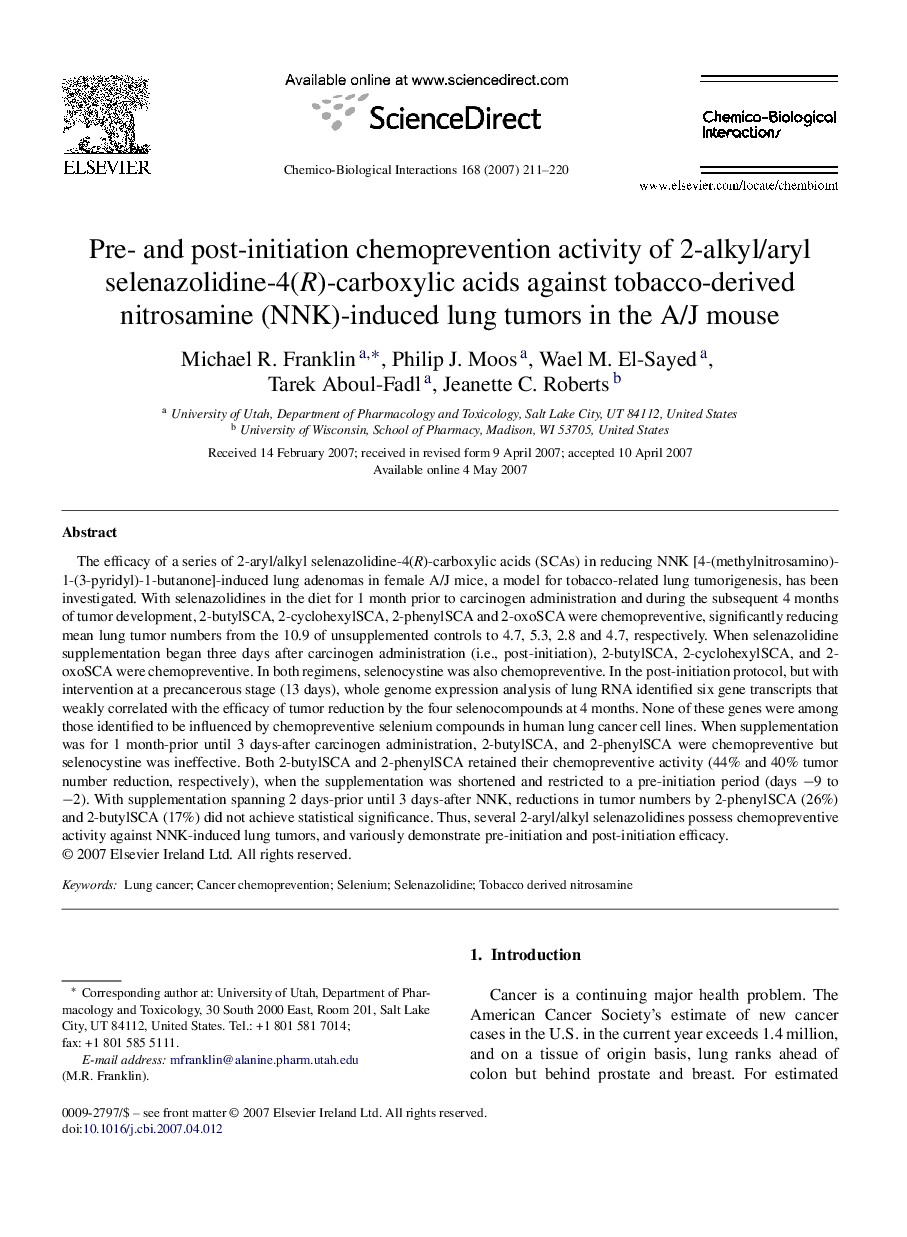| Article ID | Journal | Published Year | Pages | File Type |
|---|---|---|---|---|
| 2582305 | Chemico-Biological Interactions | 2007 | 10 Pages |
The efficacy of a series of 2-aryl/alkyl selenazolidine-4(R)-carboxylic acids (SCAs) in reducing NNK [4-(methylnitrosamino)-1-(3-pyridyl)-1-butanone]-induced lung adenomas in female A/J mice, a model for tobacco-related lung tumorigenesis, has been investigated. With selenazolidines in the diet for 1 month prior to carcinogen administration and during the subsequent 4 months of tumor development, 2-butylSCA, 2-cyclohexylSCA, 2-phenylSCA and 2-oxoSCA were chemopreventive, significantly reducing mean lung tumor numbers from the 10.9 of unsupplemented controls to 4.7, 5.3, 2.8 and 4.7, respectively. When selenazolidine supplementation began three days after carcinogen administration (i.e., post-initiation), 2-butylSCA, 2-cyclohexylSCA, and 2-oxoSCA were chemopreventive. In both regimens, selenocystine was also chemopreventive. In the post-initiation protocol, but with intervention at a precancerous stage (13 days), whole genome expression analysis of lung RNA identified six gene transcripts that weakly correlated with the efficacy of tumor reduction by the four selenocompounds at 4 months. None of these genes were among those identified to be influenced by chemopreventive selenium compounds in human lung cancer cell lines. When supplementation was for 1 month-prior until 3 days-after carcinogen administration, 2-butylSCA, and 2-phenylSCA were chemopreventive but selenocystine was ineffective. Both 2-butylSCA and 2-phenylSCA retained their chemopreventive activity (44% and 40% tumor number reduction, respectively), when the supplementation was shortened and restricted to a pre-initiation period (days −9 to −2). With supplementation spanning 2 days-prior until 3 days-after NNK, reductions in tumor numbers by 2-phenylSCA (26%) and 2-butylSCA (17%) did not achieve statistical significance. Thus, several 2-aryl/alkyl selenazolidines possess chemopreventive activity against NNK-induced lung tumors, and variously demonstrate pre-initiation and post-initiation efficacy.
